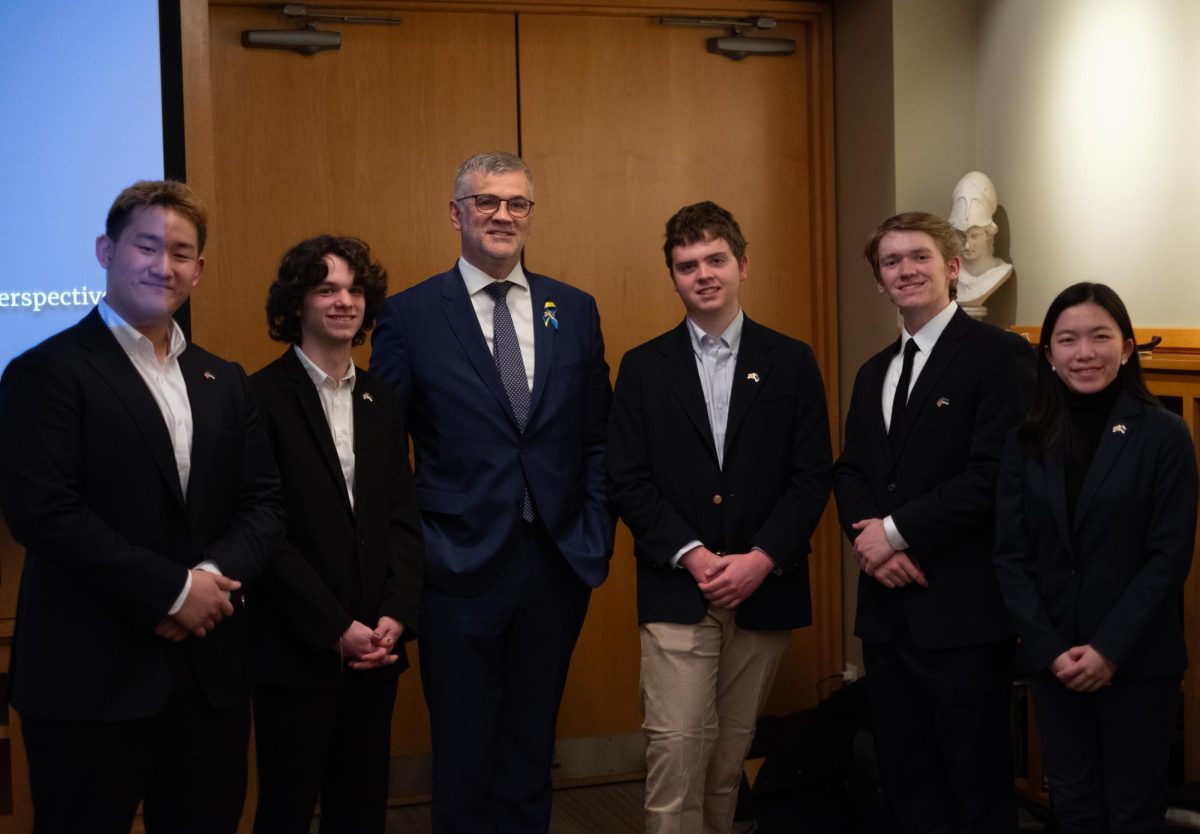On Oct. 26, the Carleton Ballroom Dance Team traveled to Minneapolis to attend the Minnesota Ballroom Blast competition. While, for some team members, it was their first time attending the competition, others enjoyed reminiscing about their first Ballroom Blast four years ago. While the event has been taking place for years, 2024 marked the first year in which Ballroom Blast was officially considered a competition and involved rankings and placements.
“This year at Blast, they did it a little differently than they have in the past,” Carolina Cabanela ’25, the team’s co-captain, said. “Normally it’s all just critique, so instead of getting first place, second place, third place, or whatever, you’d get critiques from the judges. You get ‘oh, I love your footwork,’ or ‘work on your partnership,’ or ‘work on timing.’ Something to like, help them work on things. This year, they did some critique rounds, but you could also sign up for competition rounds.”
Cabanela said that Ballroom Blast is a good first experience in a dance competition environment. Beginners — anyone who has been dancing for fewer than six months —get to perform several different styles of dancing with pre-selected and practiced partners. This year, the team has an impressive 16 beginners. Cabanela spoke excitedly about this group of newcomers, saying, “I’m so proud of them, and they did so well.”
Ostap Hrebeniuk ’27, two-year Blast participant and Co-Captain of the Social Dance Team, emphasized how the competition “was fantastic. It was a great opportunity for the team to unite and, because it was the first competition for our newcomers, it felt like the first time that the team was completely united.”
While the Ballroom Dance team does not have to be high-commitment, there is an optional practice or social dance event almost every day.
Cecelia Lochner ’28, one of this year’s beginners, said that while she could have never predicted joining and spending so much time ballroom dancing, she and many of the other beginners found themselves excited to spend a couple of hours at dance almost every day.
Many of the beginners this year progressed very far in their competitions, and some even placed. However, the ballroom team chooses not to publicize awards from these competitions due to their belief that awards are always the most accurate indicators of ability.
“Ballroom competitions are very based on luck, because the judges only see you for three seconds,” Cabanela said. “It really is up in the air […]But, I mean, our newcomers placed, which is amazing and awesome, and we should celebrate it!”
Some returning dancers found satisfaction in comparing their performance this year to previous Blast competitions. This year was Hrebeniuk’s second Blast, and “it felt like a full circle because last year, I went to dance as a Newcomer, and this year I’m a Social Dance Captain and was teaching the Newcomers. Also, seeing my own progress was very fulfilling.”
Later in the day, the team participated in a non-competitive Halloween dance, where dancers were encouraged to wear costumes and dance with partners from other college teams.
“Someone asked me to dance, and I didn’t realize this, but he was a championship-level dancer,” Lochner said. “I danced cha cha with the championship-level dancer, which is mind-blowing to me that he even asked me. Another person on my team said, ‘yeah, he asked me to do a different dance with them.’ So it was crazy that they were just kind of like asking random newcomers. It was a great experience.”
Overall, Ballroom Blast prioritized community fun activities by incorporating them into the schedule. After the more typical competitions concluded, the evening was spent doing less serious competitions such as the three-partner tango (“thrango”). This year, Carleton won the “thrango” competition, a victory Lochner and Cabanela both mentioned was well-deserved after frequentthrango-specific practice.
“They do ‘thrango.’ Sometimes they’ll do weird fox trots and a couple’s costume competition. All of those sorts of things. It’s super duper fun,” Cabanela said. “It’s kind of an in-between for newcomers, between full competition, which is all like competition-based, and then fun, just like chilling, having a great time and dancing at home.”
“I loved seeing how much joy dancing brought to all the newcomers who started through Social Dance, which is a great opportunity for people who are new to dance to experience the joy of dancing,” said Hrebeniuk.
For some dances, beginners dance with each other, but other “mixed partnerships” allow the mostly first-year beginners to work with experienced upper-level students.
Lochner explained that her ballroom partner, Rahim Hamid ’26, was able to help calm down her nerves about her first competition. She found that, after sleeping with her hair gelled back under a bonnet, waking up much too early and taking a long bus ride, dancing in front of judges was overwhelming.
“When I stopped getting super nervous was when I was doing all these dances with Rahim, and they would just make these hilarious facial expressions. You can see them in the photos that I got! I can see some of these facial expressions where it just made me laugh half the time. I was just laughing,” Lochner said.
Cabanela remembered having that same experience of building connections with the upper-level students they met in Ballroom. One of Cabanela’s senior dance partners from when she was a first-year even cheered them on at this year’s Ballroom Blast. Since graduation, two Carleton alumni became ballroom teachers in the city and were helping out with Ballroom Blast. Some of last year’s graduating class came to the competition and participated in the social dances and cheered on this year’s team.
“When I was a freshman, all of my favorite upperclassmen were dancing with me, and now I’m a senior, and I’m running the team, and we get to, like, still celebrate with [the alumni who were upperclassmen four years ago], which is super cool,” Cabanela said.









